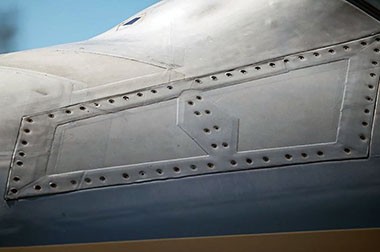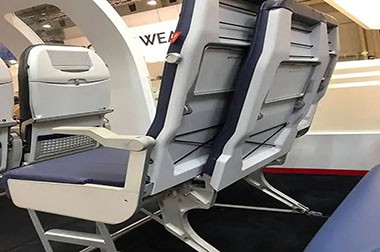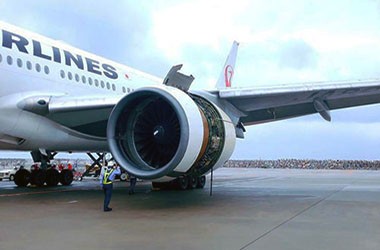7075 T6 and 2024 T3 Performance Analysis in Aerospace Applications
In aerospace applications, 7075 T6 and 2024 T3 are two commonly used high-strength aluminum alloys, each with distinct performance characteristics and application scenarios.
Comparison of 7075 T6 and 2024 T3 Properties
7075 T6 and 2024 T3 are two widely used aluminum alloys in the aerospace industry. They each possess different performance traits and are suited for different applications.
Comparison Table of 7075 T6 and 2024 T3 Properties
| Property | 7075 T6 | 2024 T3 |
| Tensile Strength | High | Medium |
| Hardness | High | Medium |
| Fatigue Resistance | Excellent | Good |
| Corrosion Resistance | Poor, requires coating protection | Better, resistant to general environmental corrosion |
| Machinability | Good (more difficult after heat treatment) | Very good |
| Weldability | Poor | Moderate |
| Application Field | Structural components, high-strength parts | Load-bearing structures |
| Fatigue Resistance | Excellent | Good |
| Main Applications | Wings, landing gear, primary load-bearing components | Fuselage skin, frames, rivets, connectors |
Both 7075 T6 and 2024 T3 have advantages and disadvantages, and the choice between them depends on specific application requirements, environmental conditions, and economic considerations.
- 7075 T6 excels in strength and hardness, making it suitable for high-strength aerospace structures.
- 2024 T3 has better machinability and corrosion resistance, making it ideal for load-bearing structures.
Aerospace Aluminum Alloy 7075 T6
7075 T6 is a high-strength aluminum alloy primarily composed of aluminum, zinc, magnesium, and copper. Its strength approaches that of some steels and it has excellent fatigue resistance, making it widely used in aerospace structural components.
Performance Characteristics
- High Strength: 7075 T6 is one of the strongest aluminum alloys available, making it ideal for aircraft components subjected to heavy loads.
- Excellent Fatigue Resistance: Due to its high zinc and magnesium content, 7075 T6 has outstanding fatigue resistance, crucial for applications subjected to repeated stress, such as wings and landing gear.
- Relatively Low Corrosion Resistance: 7075 T6 is less corrosion-resistant than 2024 T3, especially in harsh environments. To counter this, it often requires anodizing or coating.
- Heat Treatment: 7075 T6 achieves its highest strength through heat treatment. The T6 designation refers to solution heat-treated and artificially aged.
- Density: The density of 7075 T6 is 2.81 g/cm³, with its higher density contributing to its strength.
Application Scenarios
7075 T6 aluminum is primarily used in critical aircraft structural components, such as:
- Wing Spars: Withstanding bending and torsional forces during flight.
- Landing Gear Assemblies: The high strength and fatigue resistance of 7075 T6 make it ideal for landing gear, which must endure frequent impact.
- Aircraft Skin, Frames, and Connectors: Its excellent strength-to-weight ratio and fatigue resistance make it suitable for components that bear heavy loads.
Aerospace Aluminum Alloy 2024 T3
2024 T3 is an aluminum alloy composed of aluminum, copper, and magnesium, and is widely used in the aerospace industry due to its excellent strength and machinability.
Performance Characteristics
- High Strength: While not as strong as 7075 T6, 2024 T3 still offers excellent performance.
- Good Fatigue Resistance: 2024 T3 also has good fatigue resistance, making it suitable for applications subjected to cyclic stresses over time.
- Excellent Machinability: 2024 T3 aluminum is highly machinable, making it easy to cut and shape for complex parts, which is ideal for manufacturing a variety of aircraft components.
- Relatively High Corrosion Resistance: 2024 T3 has better corrosion resistance compared to 7075 T6, especially when exposed to air and natural aging.
- Density: The density of 2024 T3 is 2.78 g/cm³, slightly lower than 7075 T6.
- Heat Treatment: 2024 T3 is cold worked after solution heat treatment and then naturally aged to achieve its T3 state. The T3 designation indicates a temper that enhances strength.
Application Scenarios
2024 T3 is primarily used in secondary aircraft structures and components, particularly those requiring high strength but subjected to lower stress, such as:
- Aircraft Fuselage Skin: 2024 T3 is commonly used in fuselage skin due to its excellent machinability and fatigue resistance.
- Internal Frames and Connectors: Found in secondary structures, frames, and non-load-bearing parts due to its lightweight, moderate strength, and ease of machining.
- Rivets and Fasteners: The strength and durability of 2024 T3 make it suitable for rivets and other fastening components.








